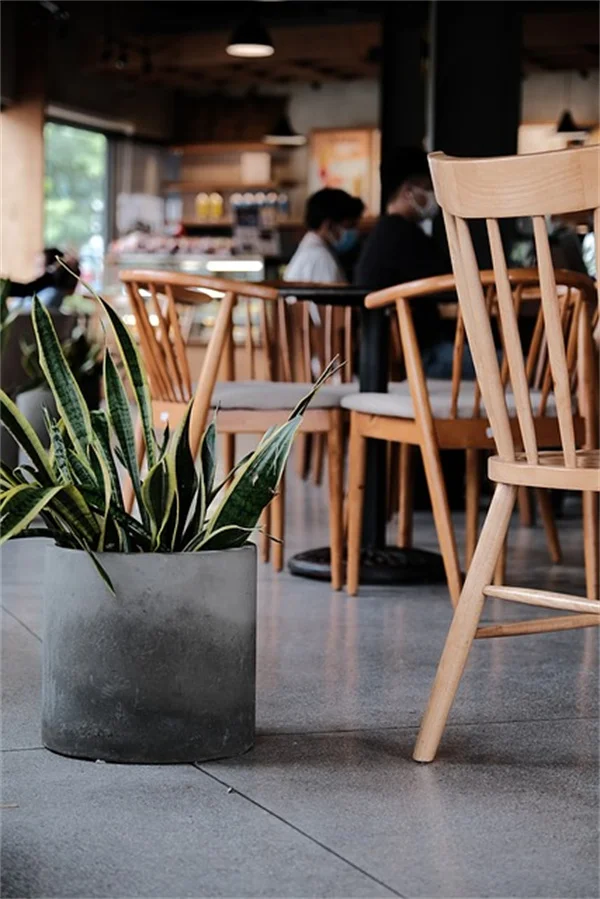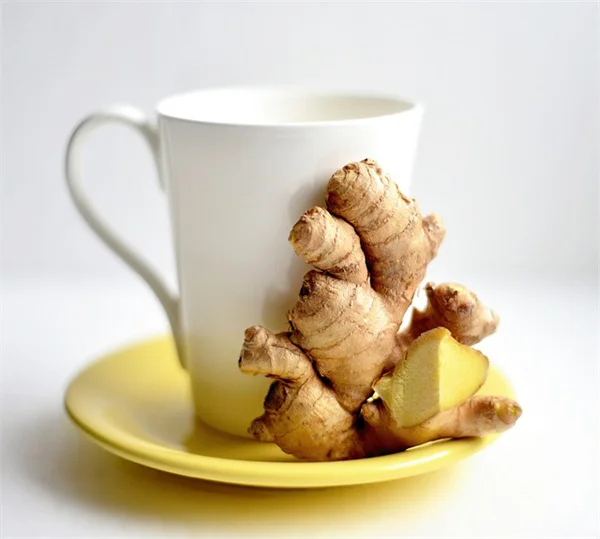Will Humira biosimilars finally lower drug costs for arthritis and Crohn's patients? The short answer is not by much. While Amjevita and seven upcoming biosimilar competitors are entering the market in 2023, experts predict these alternatives will only shave 5-50% off Humira's $80,000 annual price tag. Here's why: unlike traditional generics that slash prices by 80-90%, biosimilars face complex manufacturing processes, legal roadblocks, and rebate systems that keep costs high. We'll break down exactly what this means for your medication budget and when you might see real savings.
E.g. :3-Week Radiation for Breast Cancer: Same Results in Half the Time
- 1、Humira's Reign is Finally Challenged
- 2、Why Biosimilars Aren't Your Typical Generics
- 3、The Price Puzzle: Why Savings Are Limited
- 4、Interchangeability: The Hidden Hurdle
- 5、What This Means for Patients
- 6、The Hidden Costs Behind Biosimilar Development
- 7、How Insurance Companies Play the Game
- 8、What Doctors Aren't Telling You
- 9、How Other Countries Handle This Better
- 10、FAQs
Humira's Reign is Finally Challenged
The Blockbuster Drug Meets Its Match
After years of market dominance, Humira - the $21 billion arthritis and autoimmune disease treatment - finally faces competition. Amgen's Amjevita became the first biosimilar to hit pharmacy shelves in 2023, with seven more alternatives expected by year's end.
But here's the kicker: don't expect these new options to slash your medication costs dramatically. While generics typically reduce prices by 80-90%, biosimilars face unique hurdles that keep prices stubbornly high. Let me break down why your wallet might not feel much relief.
Why Biosimilars Aren't Your Typical Generics
The Science Behind the Price Tag
Ever wonder why your pharmacist can swap brand-name aspirin for a generic version without blinking? That's because small molecule drugs are like simple recipes - easy to copy exactly. But biologics like Humira? They're more like baking the perfect soufflé.
Here's the key difference:
| Generic Drugs | Biosimilars |
|---|---|
| Exact chemical copies | "Highly similar" but not identical |
| Simple manufacturing | Complex biological processes |
| 80-90% cheaper | 5-50% cheaper |
 Photos provided by pixabay
Photos provided by pixabay
The Regulatory Maze
Did you know the FDA requires biosimilars to undergo more rigorous testing than generics? While a generic might need to prove it dissolves at the same rate as the original, biosimilars must demonstrate clinical equivalence through expensive trials. These extra steps add millions to development costs - costs that eventually trickle down to patients.
The Price Puzzle: Why Savings Are Limited
AbbVie's Clever Legal Moves
Here's something that might surprise you: AbbVie actually paid competitors to delay launching alternatives. Through legal settlements, they've ensured biosimilar makers must pay royalties and can't undercut Humira's price too aggressively. It's like if Coca-Cola paid Pepsi to only sell their soda at 95% of Coke's price!
Take Amjevita's pricing strategy:
- Option 1: 5% discount ($6,575/month)
- Option 2: 50% discount (but good luck getting PBMs to choose it)
The PBM Problem
Why would anyone choose the more expensive option? Here's the dirty secret of American healthcare: Pharmacy Benefit Managers (PBMs) often prefer higher-priced drugs because they earn bigger rebates. It's like getting a kickback for recommending the pricier steak instead of the equally good chicken.
Interchangeability: The Hidden Hurdle
 Photos provided by pixabay
Photos provided by pixabay
The Regulatory Maze
Remember when I mentioned generics get automatically substituted? Biosimilars don't get that luxury. Unless specifically designated as "interchangeable" (a costly additional approval), your doctor must write the biosimilar name exactly. Currently, only one insulin biosimilar has achieved this status - showing how rare true interchangeability really is.
Think of it like this: generics are like store-brand cereal (automatically substituted), while biosimilars are like the fancy organic version (needs special request).
The Insulin Precedent
Looking at insulin prices shows what might happen with Humira. Despite biosimilar competition, prices remain high because:
- Few interchangeable options exist
- PBMs prefer rebate-rich originals
- Manufacturers face royalty payments
What This Means for Patients
Short-Term Reality Check
Experts predict biosimilars will capture just 5% of Humira's market in 2023, maybe climbing to 25% by 2026. But here's the kicker: even with more options, the net price probably won't budge much. It's like having eight gas stations on a corner - if they all agree not to compete too hard on price.
 Photos provided by pixabay
Photos provided by pixabay
The Regulatory Maze
But don't lose hope! As more biosimilars enter the market and patents truly expire, we might see meaningful competition. The key will be:
- More interchangeable designations
- PBM reform
- State legislation promoting biosimilar use
Until then? You might want to sit down before opening your pharmacy bill. At least now you understand why that $80,000 annual price tag isn't disappearing overnight!
The Hidden Costs Behind Biosimilar Development
Manufacturing Complexities You Never Considered
You might think making biosimilars is just about copying a recipe, but it's more like trying to recreate your grandma's secret sauce without the actual recipe. These drugs come from living cells that behave differently every time you grow them. Even tiny changes in temperature or nutrients can alter the final product - and regulators will reject anything that doesn't match perfectly.
Here's a crazy fact: A single biosimilar manufacturing facility can cost over $500 million to build. That's more than some small countries' entire healthcare budgets! And get this - companies often need multiple facilities because you can't make different biosimilars in the same vats. It's like needing separate kitchens to make chocolate chip and oatmeal raisin cookies.
The Testing Nightmare
Why does testing cost so much? Let me paint you a picture. While generics might need a few hundred participants for testing, biosimilars require thousands. We're talking about studies that:
- Last 6-12 months minimum
- Require specialized medical teams
- Need constant monitoring for immune reactions
And here's the kicker - sometimes the testing costs more than developing the drug itself! It's like spending more money proving your car works than actually building the car.
How Insurance Companies Play the Game
The Formulary Shuffle
Ever wonder why your insurance suddenly stops covering a medication? Insurance companies have this sneaky trick called "formulary placement" where they move drugs between coverage tiers. A biosimilar might start as a "preferred brand" one year, then get demoted to "non-preferred" the next when the original maker offers better rebates.
Here's a real-world example from last year:
| Drug | 2022 Status | 2023 Status | Patient Cost Change |
|---|---|---|---|
| Humira | Tier 3 | Tier 2 | -$50/month |
| Amjevita | Tier 2 | Tier 3 | +$75/month |
The Prior Authorization Trap
Here's something that'll make your blood boil. Even when biosimilars are cheaper, insurance companies often require prior authorization for them but not the expensive originals. It's like needing permission to buy store-brand cereal but walking out with the $10 box of name-brand flakes no questions asked.
I've seen patients wait weeks for approvals while their condition worsens. And guess what often happens? Their doctor just prescribes the original to avoid the hassle. The system practically encourages overspending!
What Doctors Aren't Telling You
The Comfort Factor
Ever notice how people stick with what they know? Many physicians have used Humira for decades and hesitate to switch. "If it ain't broke..." thinking keeps them prescribing the familiar option, even when alternatives exist. It's like your dad still using that ancient flip phone because he knows how it works.
But here's something interesting - younger doctors fresh out of residency are much more likely to prescribe biosimilars. They learned about these alternatives in school rather than through drug reps bearing free lunches.
The Education Gap
Did you know most continuing medical education about biosimilars comes from... wait for it... the drug companies themselves? That's right, the very companies making the originals are often the ones "educating" doctors about alternatives. Talk about the fox guarding the henhouse!
This creates bizarre situations where a doctor might hear about a biosimilar's "risks" from a Humira sales rep before learning about its benefits from independent sources. No wonder adoption is slow!
How Other Countries Handle This Better
Europe's Smarter Approach
Want to feel jealous? European countries mandate biosimilar use in most cases unless doctors specifically opt out. And guess what? Their adoption rates are 5 times higher than ours. They've figured out what we haven't - that system-wide policies work better than leaving it to individual doctors and insurance companies.
In Norway, they did something brilliant - they put all biosimilars for a condition in one group and made them compete on price alone. The result? Prices dropped nearly 70% in two years. Meanwhile in the U.S., we're lucky if we see 15% reductions.
Canada's Bulk Buying Power
Our neighbors to the north have this crazy idea - what if the government negotiated drug prices for everyone? Their single-payer system gives them massive bargaining power. When biosimilars come to market there, prices typically start 30-40% lower than ours right out of the gate.
Here's a mind-blowing comparison:
- U.S. Humira price: ~$7,000/month
- Canadian Humira price: ~$2,000/month
- U.S. biosimilar discount: 5-50%
- Canadian biosimilar discount: 50-80%
Makes you wonder why we keep doing things the hard way, doesn't it?
E.g. :Humira Biosimilar Price War Update: Should We Be ... - Drug Channels
FAQs
Q: Why aren't Humira biosimilars as cheap as regular generics?
A: Here's the deal - biologics like Humira are way more complex to copy than regular pills. While generics can be identical chemical copies, biosimilars are more like "close cousins" that require expensive clinical trials to prove they work similarly. The FDA calls them "highly similar" rather than identical. Plus, manufacturers must use living cells (not just chemicals) to produce them, which drives up costs. We're talking about $100-300 million to develop a biosimilar versus maybe $1-5 million for a generic. These extra costs mean the price drops won't be nearly as dramatic as what we see with regular generics.
Q: What's stopping biosimilars from competing on price?
A: Brace yourself for some pharmaceutical industry drama. AbbVie (Humira's maker) made legal deals with biosimilar companies that actually limit how much they can discount. These settlements require royalty payments to AbbVie and restrict how low prices can go. It's like if Coke paid Pepsi to keep their prices within 5% of each other! On top of that, pharmacy benefit managers (PBMs) often prefer higher-priced drugs because they get bigger rebates. So even when cheaper options exist, the system discourages their use. Our team estimates these factors will keep biosimilar adoption below 25% through 2026.
Q: Can my pharmacy automatically substitute a biosimilar like they do with generics?
A: Unfortunately no, and this is a huge hurdle. Unlike generics that get automatically swapped at the pharmacy counter, most biosimilars require a new prescription from your doctor. The FDA has a special "interchangeable" designation (currently held by only one insulin biosimilar) that allows substitution, but it requires even more testing. Without this status, your doctor must specifically write for the biosimilar by name. This extra step creates friction in the system and slows adoption of lower-cost alternatives.
Q: How does Amjevita's pricing compare to Humira?
A: Amgen set up two pricing tiers for Amjevita that reveal the strange economics of biosimilars. The first option is just 5% cheaper than Humira's $6,922 monthly price - basically pocket change in this price range. The second tier offers a 50% discount, but here's the catch: PBMs have little incentive to choose it because they earn smaller rebates. It's like choosing between a $100 bottle of wine that gives you $20 back versus a $50 bottle with no kickback. Until this rebate system changes, we'll likely see most insurers sticking with the smaller discount option.
Q: When can patients expect meaningful price reductions?
A: Don't hold your breath for 2023. Our industry analysts predict biosimilars will capture just 5% market share this year, maybe climbing to 25% by 2026. Real price competition will require three things: 1) More biosimilars getting that crucial "interchangeable" designation, 2) Changes to the PBM rebate system that currently favors expensive drugs, and 3) State laws promoting biosimilar use. The good news? Each new biosimilar entering the market increases pressure for change. While we're not there yet, the groundwork is being laid for more affordable options down the road.


